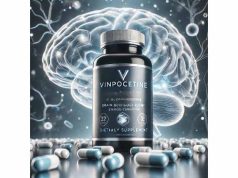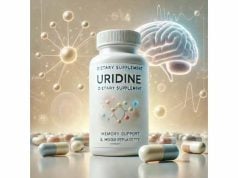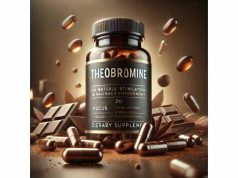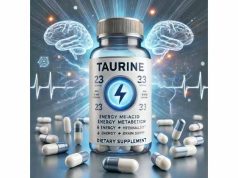
S-Adenosylmethionine, commonly abbreviated as SAM-e, has captured significant attention for its potential to balance mood, support cognitive function, and address various psychiatric conditions. As a naturally occurring molecule in the body, SAM-e plays a pivotal role in numerous biochemical reactions, including the production and metabolism of key neurotransmitters. Its capacity to elevate brain health and improve emotional well-being has led to its widespread use as a dietary supplement. This article examines how S-Adenosylmethionine Improves Mental Health, prevents mood fluctuations, and contributes to overall emotional equilibrium, providing a science-based overview of its applications and benefits in managing brain-related challenges.
Table of Contents
- Understanding S-Adenosylmethionine: An Introductory Explanation
- The Pathways by Which S-Adenosylmethionine Elevates Mental Function and Brain Resilience
- Noteworthy Benefits of S-Adenosylmethionine for Psychiatric Wellness
- Optimizing Your Use of S-Adenosylmethionine for the Greatest Benefit
- Clinical Research and Scientific Insights
- Frequently Asked Questions
- References and Sources
Understanding S-Adenosylmethionine: An Introductory Explanation
S-Adenosylmethionine—often referred to as SAM-e—is a naturally synthesized compound found in virtually all body tissues. It was first discovered in the 1950s by Italian researcher Giulio Cantoni, who identified SAM-e as a crucial methyl donor in a variety of biological reactions. These reactions are integral for gene expression, protein function, and the production of neurotransmitters.
SAM-e is formed when the amino acid methionine combines with adenosine triphosphate (ATP), the cell’s primary energy molecule. This formation occurs primarily in the liver, which makes sense given that the liver is a hub for metabolic processes. Beyond metabolic duties, SAM-e influences how your neurons communicate, impacting brain function and emotional stability.
Historical Snapshot and Traditional Uses
While not traditionally recognized in herbal or ancient medicine (since it’s a molecule rather than a plant), SAM-e’s mood-balancing qualities became apparent in clinical research starting in the 1970s. Early experiments hinted at its capability to elevate mood and mitigate depressive symptoms. Over the last few decades, it has emerged as a go-to supplement for people seeking natural avenues to improve mental well-being, ease stress, and bolster cognitive clarity.
Core Biochemical Significance
As a methyl donor, SAM-e provides methyl groups crucial to numerous physiological tasks. Methylation is pivotal for:
- Gene Regulation: Adding a methyl group to DNA affects gene expression, which can turn genes on or off.
- Hormone Metabolism: Key in the breakdown of hormones, ensuring balance and proper clearance.
- Neurotransmitter Synthesis and Metabolism: Affects neurotransmitters like serotonin, dopamine, and norepinephrine, all vital for mood stability.
Given these diverse responsibilities, it’s no surprise that SAM-e for Brain Health has garnered considerable attention. Imbalances in methylation pathways may lead to various mental health challenges, ranging from mild mood irregularities to more severe conditions like major depressive disorder.
The Distinction Between Endogenous and Supplemental SAM-e
The human body naturally produces SAM-e, but factors like diet, lifestyle, genetics, and age can influence production levels. Reduced levels may manifest as depression, fatigue, or difficulties with concentration. Supplemental SAM-e offers an external source to help ensure adequate levels are available for critical methylation processes. Though dietary strategies and overall health status remain vital, supplementation has proven beneficial for individuals with certain deficiencies or increased demands.
Initial Perceptions and Evolving Acceptance
Early skepticism about SAM-e’s effectiveness originated from insufficient or conflicting research findings. However, more recent, methodologically sound clinical trials have fueled renewed interest among healthcare professionals. Today, SAM-e supplementation is commonly recommended in parts of Europe as a potential treatment adjunct for depression, joint disorders, and various metabolic imbalances. Its acceptance continues to grow, especially among those interested in an integrated approach to mental wellness.
Related Nutrients and Synergists
Because SAM-e relies heavily on the presence of B vitamins—especially folate (B9), B6, and B12—a deficiency in these vitamins may compromise SAM-e’s efficacy. These B vitamins work synergistically with SAM-e to recycle homocysteine back into methionine, thereby perpetuating healthy methylation cycles. As a result, practitioners frequently advise combining SAM-e with a high-quality B-complex supplement to boost overall mental health outcomes.
The Pathways by Which S-Adenosylmethionine Elevates Mental Function and Brain Resilience
SAM-e’s profound impact on emotional balance and cognitive performance hinges on its versatile role in several biochemical pathways. From regulating neurotransmitters to warding off oxidative stress, S-Adenosylmethionine for Mental Health provides an in-depth example of how a single molecule can yield broad-spectrum benefits.
Neurotransmitter Modulation
At the core of SAM-e’s psychoactive effects is its influence on neurotransmitter balance. By donating methyl groups, SAM-e aids the synthesis and recycling of critical mood-regulating chemicals:
- Serotonin: Often referred to as the “feel-good” neurotransmitter, serotonin significantly affects mood and emotional stability. SAM-e helps catalyze the conversion of tryptophan into serotonin. Low serotonin levels are frequently associated with depression and anxiety.
- Dopamine: Involved in motivation, pleasure, and reward, dopamine is another target of SAM-e’s methyl-donor function. Adequate dopamine production can aid in managing attention deficits, low motivation, and certain aspects of depression.
- Norepinephrine: This neurotransmitter fosters alertness, concentration, and response to stress. SAM-e influences its availability, contributing to improved mental clarity and coping mechanisms.
By assisting in the synthesis of these neurotransmitters, SAM-e acts somewhat like an internal catalyst for balanced brain chemistry, potentially mitigating symptoms of mood disorders.
Anti-inflammatory and Antioxidant Shield
Neuroinflammation can severely impact mental health, often correlating with anxiety, depression, and reduced cognitive function. SAM-e’s antioxidant and anti-inflammatory properties emerge from its role in:
- Glutathione Synthesis: Glutathione is the body’s master antioxidant, crucial for detoxifying harmful substances and combating oxidative stress. Adequate levels of SAM-e may support healthy glutathione production.
- Modulation of Pro-inflammatory Cytokines: High levels of pro-inflammatory markers like IL-6 and TNF-α have been linked to mental health issues. SAM-e may assist in balancing these cytokine pathways, offering potential protection against inflammation-induced mood disturbances.
Mitochondrial Function and Energy Metabolism
Brain cells are highly demanding in terms of energy, requiring a steady supply of ATP for everything from neurotransmission to neuronal maintenance. SAM-e indirectly supports these metabolic needs by ensuring efficient methylation processes that:
- Facilitate Lipid Metabolism: Healthy cell membranes, particularly in neurons, require proper lipid composition. Methylation influences phospholipid turnover in cell membranes, affecting fluidity and receptor function.
- Enhance Creatine Production: Methylation steps are essential in synthesizing creatine, which supplies additional energy reserves to muscles and, to some extent, the brain.
- Regulate Gene Expression: Methylation can turn genes off and on, indirectly affecting how cells produce enzymes and proteins involved in energy pathways.
With balanced methylation, cells more efficiently generate and utilize energy, contributing to sharper cognitive performance and possibly lowering mental fatigue.
Stress Hormone Regulation
Chronic stress elevates cortisol, which in turn disrupts sleep, triggers inflammation, and aggravates mood disorders. SAM-e’s involvement in hormone metabolism can help keep cortisol levels in check. Although not a direct hormone regulator like adaptogens, it ensures that stress-related biochemical pathways remain balanced. As a result, individuals may find it easier to handle everyday pressures and maintain emotional stability.
Epigenetic Influences
SAM-e’s methyl-donor activity has far-reaching epigenetic implications. By attaching methyl groups to histones or DNA, SAM-e can modulate gene expression patterns in neurons, potentially affecting long-term mental health. For instance, certain genes linked to emotional resilience or stress responses may require specific methylation states to function optimally. Although research in this area continues to evolve, early findings suggest that robust methylation cycles might help the brain adapt to stress more effectively.
Complementary Effect with Other Neuroprotective Agents
SAM-e often appears in conjunction with other brain-supportive nutrients like omega-3 fatty acids, vitamin D, and magnesium. Its synergy with these substances can further strengthen the mental health benefits. For example, while omega-3 fatty acids provide structural components for neuronal membranes, SAM-e ensures efficient methylation for neurotransmitter synthesis. This complementary action offers a multi-pronged strategy for improving emotional well-being.
Holistic Impact on Brain Circuitry
At a macro level, balanced methylation and robust neurotransmitter availability influence entire neural networks, from mood regulation in the limbic system to higher cognitive functions in the prefrontal cortex. Individuals might report:
- Improved focus and mental clarity.
- Reduced depressive symptoms or anxiety levels.
- Enhanced motivation and ability to handle daily tasks.
- Smoother emotional transitions with fewer extreme highs or lows.
Together, these micro and macro benefits illustrate how S-Adenosylmethionine can be a powerful ally for those aiming to optimize mental function and preserve brain health.
Noteworthy Benefits of S-Adenosylmethionine for Psychiatric Wellness
As research on S-Adenosylmethionine for Mental Health grows, so does our understanding of the specific psychiatric challenges it may help address. From common mood disorders to more specialized cognitive concerns, SAM-e is increasingly recognized as an adaptable supplement that can integrate into diverse mental health strategies.
1. Alleviating Depressive Symptoms
One of the most well-documented uses of SAM-e is in easing mild to moderate depressive episodes. Multiple studies have compared SAM-e’s effectiveness to conventional antidepressants, with a number of trials indicating comparable benefits. By boosting serotonin, dopamine, and norepinephrine, SAM-e helps re-establish chemical balance, potentially uplifting mood and energy levels. While it may not replace professional treatment for severe cases, it often serves as a valuable adjunct that can amplify the efficacy of prescription antidepressants.
2. Mitigating Anxiety and Stress
Chronic worry and tension frequently stem from hormonal imbalances and dysregulated neurotransmitter activity. SAM-e’s capacity to modulate these factors offers relief. Users often report:
- Improved Emotional Resilience: Feeling calmer in high-pressure scenarios.
- Better Sleep Quality: Deeper, more restful sleep that may further stabilize mood.
- Elevated Coping Skills: The ability to navigate daily stressors without becoming easily overwhelmed.
These shifts might be most notable for individuals whose anxiety is mild to moderate, though professional oversight remains crucial for severe anxiety disorders.
3. Supporting Bipolar Disorder Management
Although more research is needed, some preliminary studies suggest that SAM-e may help reduce the severity and duration of depressive phases in bipolar disorder. Given the complexity of this condition and the possibility of triggering manic episodes with certain supplements, medical supervision is essential. Nevertheless, the early promise indicates that balanced neurotransmitter modulation might play a role in smoothing out bipolar mood fluctuations when integrated carefully into an existing treatment plan.
4. Cognitive Enhancement and Brain Fog Reduction
Difficulty focusing, confusion, or persistent “brain fog” can arise from various conditions, including chronic stress, nutritional deficiencies, and hormonal imbalances. SAM-e’s role in DNA methylation, neurotransmitter production, and cell membrane fluidity combines to offer improved clarity of thought. While not a magic wand, consistent supplementation often correlates with better mental organization, higher alertness, and a general sense of mental sharpness.
5. Assistance in Substance Withdrawal and Recovery
Emerging research is exploring SAM-e’s role in recovery pathways for substance addiction. Substance abuse frequently depletes the body’s nutritional stores and disrupts normal neurotransmitter cycles. By supporting methylation and helping restore balanced brain chemistry, SAM-e may ease some withdrawal symptoms and improve emotional stability during recovery. Although far from a standalone solution, it can be part of a broader strategy that includes counseling, medication (when needed), and lifestyle interventions.
6. Potential Synergy with Psychotherapy and Medications
For those already under psychiatric care, combining SAM-e with conventional treatments may deliver compounded benefits. Certain studies suggest that patients taking SSRIs or other antidepressants alongside SAM-e can experience a faster onset of symptom relief or more robust improvements in mood and function. However, any such combination should be closely monitored by a healthcare professional to avoid adverse interactions or shifts in mood states.
7. Preventive Measures and Early Intervention
Embracing S-Adenosylmethionine to Prevent Mental Disorders remains an area of growing interest. Because many psychiatric issues worsen over time if unaddressed, interventions that stabilize neurotransmitter levels and inflammatory responses might reduce the risk of progression. For those at elevated risk—due to genetics, long-term stress, or chronic illness—maintaining healthy SAM-e levels could serve as a proactive measure to safeguard emotional and cognitive health.
8. Quality-of-Life Improvements
Ultimately, SAM-e may raise the overall sense of well-being and life satisfaction. Balanced moods, sharpened cognition, and decreased stress create a healthier emotional landscape. People often find themselves better able to focus on relationships, engage in hobbies, and pursue career or personal goals. This ripple effect extends beyond merely “feeling good” by reinforcing a positive cycle of improved self-esteem, healthy coping mechanisms, and meaningful social interactions.
Optimizing Your Use of S-Adenosylmethionine for the Greatest Benefit
Choosing the right approach to supplementation is paramount for realizing S-Adenosylmethionine Benefits for Mental Health. Considerations around form, timing, dosage, and lifestyle synergy can each influence how effectively SAM-e supports your emotional and cognitive well-being.
1. Selecting the Right Formulation
SAM-e supplements come in various salt forms, most commonly tosylate and butanedisulfonate. Each form is designed to enhance the stability of SAM-e molecules, which are otherwise prone to degradation:
- Enteric-Coated Tablets: Frequently recommended due to better absorption and reduced gastrointestinal discomfort. These tablets are designed to dissolve in the intestines rather than the stomach.
- Capsules with Delayed-Release: Provide a timed release, potentially enhancing the consistent availability of SAM-e in the bloodstream.
- Powder or Bulk Options: Less common but may be found in specialized supplement ranges. Requires careful handling and dosing to maintain potency.
Quality and bioavailability are critical. Look for products from reputable brands that specify SAM-e content in milligrams and offer transparent labeling about the form of SAM-e used.
2. Ideal Dosage Ranges
Recommended daily dosages for mental health support typically range from 200 mg to 800 mg, although some protocols might suggest higher amounts (up to 1,200 mg) for acute concerns. Key factors influencing dosage choice include:
- Severity of Symptoms: More pronounced mood fluctuations may necessitate higher amounts initially.
- Age and Body Weight: Larger individuals or older adults may benefit from tailored dosages based on metabolic requirements.
- Tolerance and Response: Not everyone reacts the same way to SAM-e. It’s prudent to start at a modest dose and gradually increase, monitoring for side effects or improvements in mood.
A healthcare provider’s guidance proves invaluable here, especially if you’re on other medications or dealing with complex health conditions.
3. Timing of Administration
Because SAM-e can have mildly energizing effects for some individuals, taking it in the morning or early afternoon often works best. Splitting doses throughout the day helps sustain steady levels in the bloodstream, potentially amplifying the supplement’s benefits. For example:
- Morning Dose: Encourages an early day lift in mood and mental clarity.
- Afternoon Dose (if needed): Maintains stable levels and continues mental support into the evening.
Should you notice any sleep disturbances, it may be wise to avoid taking SAM-e late in the day.
4. Pairing with B Vitamins and Other Nutrients
SAM-e is heavily reliant on cofactors like folate (B9), vitamin B12, and vitamin B6 for optimal function. Insufficient levels of these nutrients can derail the methylation cycle, diminishing SAM-e’s efficacy. Thus, a well-rounded approach typically involves:
- B-Complex Supplementation: Ensures robust production of methionine, which the body converts into SAM-e.
- Magnesium and Zinc: Both minerals contribute to balanced neurotransmitter activity and may synergize with SAM-e in stabilizing mood.
- Omega-3 Fatty Acids: Known for supporting membrane health and neurotransmission, these can further enhance SAM-e’s mental health impact.
5. Monitoring and Adjusting
Consistent self-monitoring is key. Keep a daily or weekly log to track shifts in mood, energy, and mental clarity. This practice allows you to assess whether the current dosage meets your needs or if adjustments are necessary. Some people notice changes in a matter of days, while others require a few weeks of stable supplementation. Patience and attentive evaluation will help tailor a long-term plan.
6. Possible Side Effects and Mitigation
While SAM-e is generally well-tolerated, potential side effects can include:
- Gastrointestinal Upset: Nausea, diarrhea, or mild stomach discomfort are among the most common. Enteric-coated formulas often alleviate this issue.
- Headaches or Irritability: Linked to shifts in neurotransmitter levels, these usually subside as the body adjusts.
- Mania or Hypomania: In rare cases, especially in those with bipolar tendencies, mood elevation can escalate into a manic or hypomanic episode. Healthcare supervision is essential if you have a history of bipolar disorder.
If side effects persist or worsen, consult a qualified professional for guidance. In most cases, reducing dosage or switching to a different form of supplementation resolves any discomfort.
7. Integration with Medical Treatments
Individuals who already take antidepressants, antipsychotics, or other psychiatric medications must exercise caution. SAM-e can interact with these drugs, potentially amplifying or altering their effects. Before introducing SAM-e to an existing treatment plan, consult with a healthcare provider well-versed in integrative mental health approaches.
8. Lifestyle Considerations
Supplementation alone cannot fully address mental health challenges. SAM-e’s benefits multiply when integrated into a holistic routine:
- Balanced Diet: Emphasize fruits, vegetables, whole grains, and lean proteins to support methylation cycles and general wellness.
- Physical Activity: Exercise reduces stress, boosts endorphins, and can complement SAM-e’s mood-enhancing properties.
- Adequate Sleep: 7–9 hours of restful sleep each night allows the brain to restore neurotransmitter levels and repair itself.
- Stress Management Techniques: Practices like meditation, deep breathing, and psychotherapy can deepen SAM-e’s stabilizing effects on mood.
A multifaceted approach ensures that the biochemical enhancements provided by SAM-e integrate seamlessly with overall mental health improvements.
Clinical Research and Scientific Insights
Over the decades, multiple studies and meta-analyses have investigated whether S-Adenosylmethionine for Brain Health can stand alongside more conventional treatments for depression, cognitive dysfunction, and other mental disorders. Although research continues, existing data supports SAM-e’s efficacy and safety profile for a variety of applications.
Early Investigations and Landmark Studies
Initial research in the 1970s and 1980s primarily focused on SAM-e’s antidepressant potential. Early clinical trials often reported promising results, though they were sometimes constrained by small participant numbers or design limitations. Among the pioneering research efforts, some key observations emerged:
- Comparable Efficacy to Antidepressants: SAM-e was occasionally found to be as effective as certain tricyclic antidepressants for mild to moderate depression, with fewer reported side effects.
- Rapid Onset of Action: Some studies suggested that symptom relief might occur faster with SAM-e than with traditional medications, though more extensive trials are needed to confirm this advantage conclusively.
Recent Meta-Analyses and Reviews
In recent years, systematic reviews and meta-analyses have synthesized data from smaller studies:
- Depression Relief: A meta-analysis published in CNS & Neurological Disorders – Drug Targets concluded that SAM-e, as an add-on to standard antidepressants, could amplify therapeutic benefits while remaining relatively safe.
- Comparative Studies: In head-to-head trials against SSRIs, outcomes varied; however, no major negative interactions were observed when combining SAM-e with these medications, provided the process was medically supervised.
- Long-Term Safety: Extended use of SAM-e generally appears to maintain its safety profile, although direct studies on long-term administration remain somewhat limited.
Mechanistic Research on Neuroprotection
Beyond mood regulation, lab-based experiments have explored SAM-e’s capacity to safeguard neurons against damage and dysregulation:
- Gene Expression Studies: Show that SAM-e can modify the expression of genes tied to synaptic plasticity and stress responses, which has implications for resilience against mental health deterioration.
- Cell Culture Models: Indicate that SAM-e might reduce cell apoptosis (programmed cell death) under stressful conditions, hinting at broader protective capabilities in neurodegenerative disorders.
Specialized Applications: Fibromyalgia, Chronic Fatigue, and More
Some small-scale trials have examined SAM-e for conditions that intersect with mental health, such as fibromyalgia and chronic fatigue syndrome—both frequently accompanied by depression or anxiety. Preliminary findings reveal partial symptom improvement, particularly in mood and pain management, yet larger trials are necessary to draw definitive conclusions.
Research Gaps and Ongoing Investigations
While the scope of studies supporting SAM-e’s mental health benefits is growing, several gaps persist:
- Optimal Dosing Protocols: Individual responses vary greatly, and guidelines for personalizing dosage remain underdeveloped.
- Longitudinal Impact: Long-term safety and effectiveness data for continuous SAM-e use—especially at higher doses—are still somewhat sparse.
- Complex Psychiatric Disorders: Conditions like schizophrenia or severe bipolar disorder warrant more focused studies to clarify SAM-e’s role and safety in complex mental health management.
Nevertheless, the cumulative evidence underpins the idea that SAM-e can be a vital tool in combating depression, enhancing cognitive function, and possibly preventing certain mental disorders. When used responsibly and in conjunction with professional oversight, SAM-e emerges as a promising piece of the mental wellness puzzle.
Frequently Asked Questions
What’s the typical time frame to notice changes in mood with SAM-e?
Many people observe shifts in mood or energy within two to four weeks. However, individual responses vary based on factors like dosage, baseline health, and lifestyle. Keeping a journal of your mental and emotional state can help track improvements over time.
Can SAM-e alone treat severe depression or bipolar disorder?
It’s generally not advised to rely solely on SAM-e for treating severe psychiatric conditions. Instead, consider it an adjunct therapy under professional guidance. Bipolar disorder in particular requires careful monitoring due to risks of triggering mania or hypomania.
Is it safe to take SAM-e with my current antidepressant medication?
Combining SAM-e with antidepressants can be beneficial but should only occur with a healthcare provider’s supervision. There is potential for interaction or over-amplification of effects, so proper guidance is critical for safe and effective use.
Can SAM-e prevent the onset of mental disorders?
While SAM-e may contribute to a healthier brain chemistry environment, it does not guarantee complete prevention of mental disorders. However, supporting balanced neurotransmitters and robust methylation cycles may reduce risk factors, especially for individuals prone to stress-induced mood imbalances.
Are there dietary adjustments needed when supplementing with SAM-e?
A balanced diet rich in B vitamins, particularly folate and B12, enhances SAM-e’s efficacy. Additionally, staying well-hydrated and emphasizing nutrient-dense foods can help maintain stable methylation processes and support overall mental well-being.
References and Sources
- Cantoni, G. L. (1953). The Nature of the Active Methyl Donor Formed Enzymatically from L-Methionine and Adenosine Triphosphate. Journal of the American Chemical Society, 75(17), 4637–4638.
- Sharma, A., Gerbarg, P. L., Bottiglieri, T., Miller, A. L., & Brown, R. P. (2017). S-Adenosylmethionine (SAM-e) for the Treatment of Depression. Integrative Medicine: A Clinician’s Journal, 16(2), 30–35.
- Papakostas, G. I. et al. (2010). S-Adenosyl Methionine (SAM-e) Augmentation of Serotonin Reuptake Inhibitors for Antidepressant Nonresponders with Major Depressive Disorder: A Randomized Clinical Trial. American Journal of Psychiatry, 167(8), 942–948.
- Salerno, S. M., Browning, R., & Jackson, J. L. (2002). The Effect of S-Adenosyl-L-Methionine on Depressive Symptoms in Humans. American Family Physician, 66(1), 129–130.
- Mischoulon, D., & Fava, M. (2002). Role of S-Adenosyl-L-Methionine in the Treatment of Depression: A Review of the Evidence. American Journal of Clinical Nutrition, 76(5), 1158S–1161S.
- Bottiglieri, T. (2013). S-Adenosyl-L-methionine (SAM-e): From the Bench to the Bedside—Molecular Basis of a Pleiotropic Molecule. American Journal of Clinical Nutrition, 98(5), 1162S–1167S.
Disclaimer:
This article is intended solely for educational purposes and does not replace personalized medical advice, diagnosis, or treatment. Always consult a qualified healthcare professional before starting any new supplement or therapy, especially if you have pre-existing health conditions or are on medication.
We hope you found this information helpful! If it resonated with you, please share it on Facebook, X (formerly Twitter), or the social media platform of your choice. Be sure to follow us for more insights and resources on holistic health and wellness. Stay informed and take good care!










